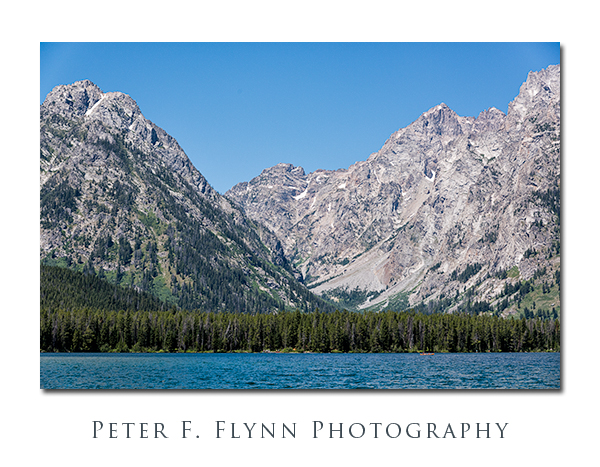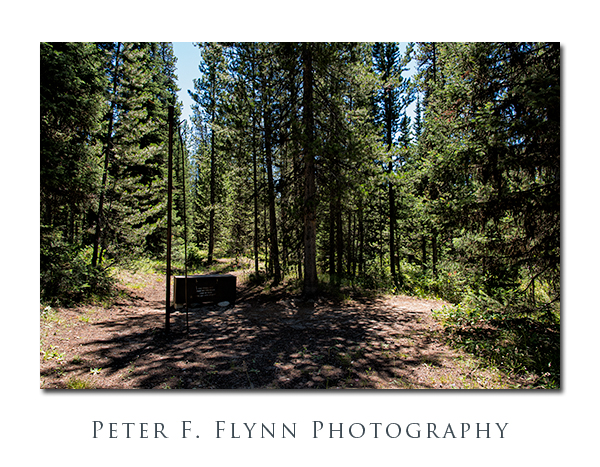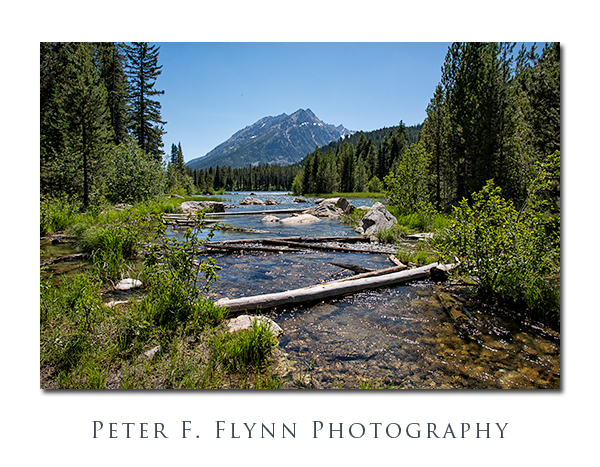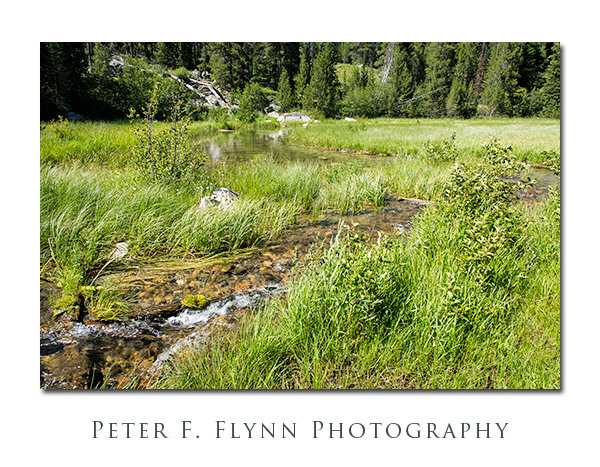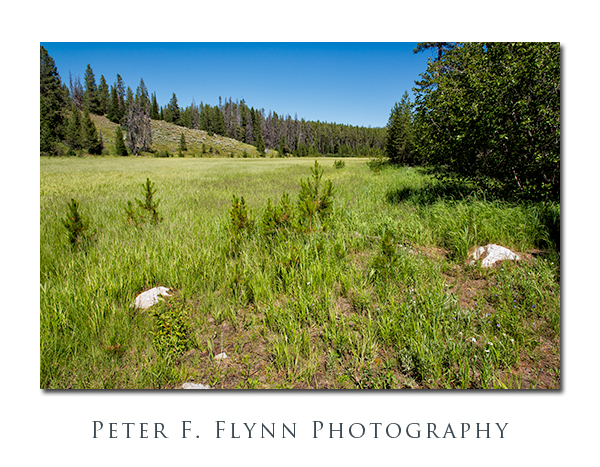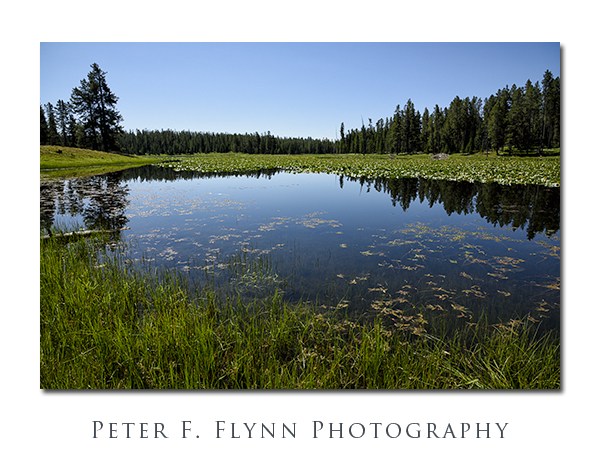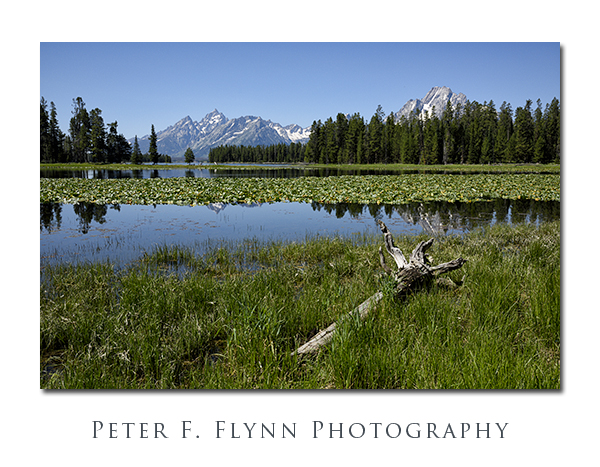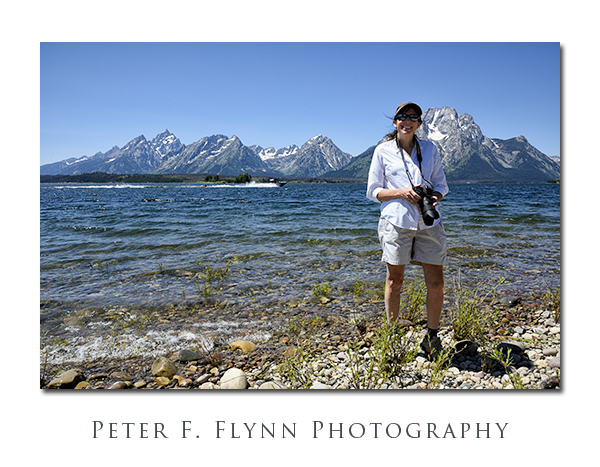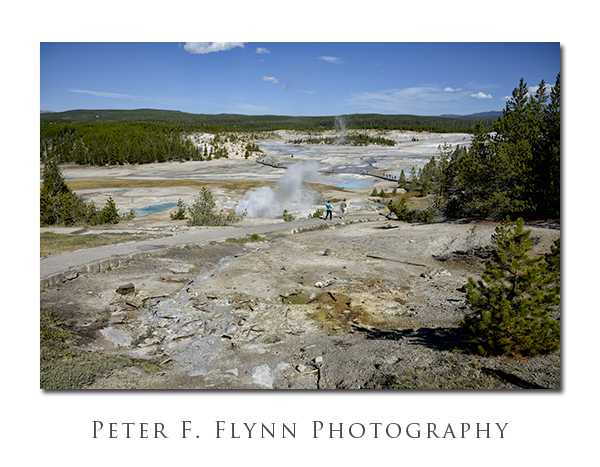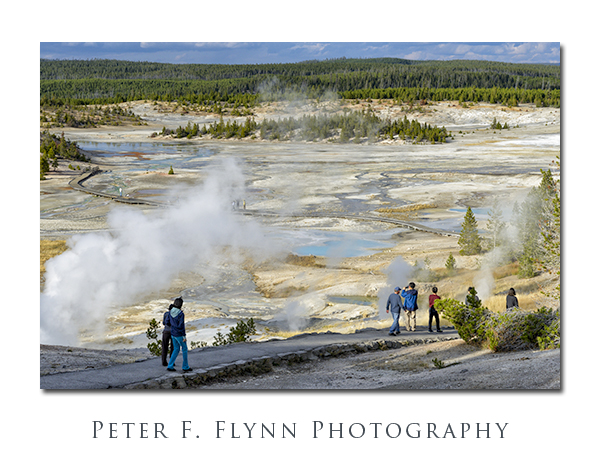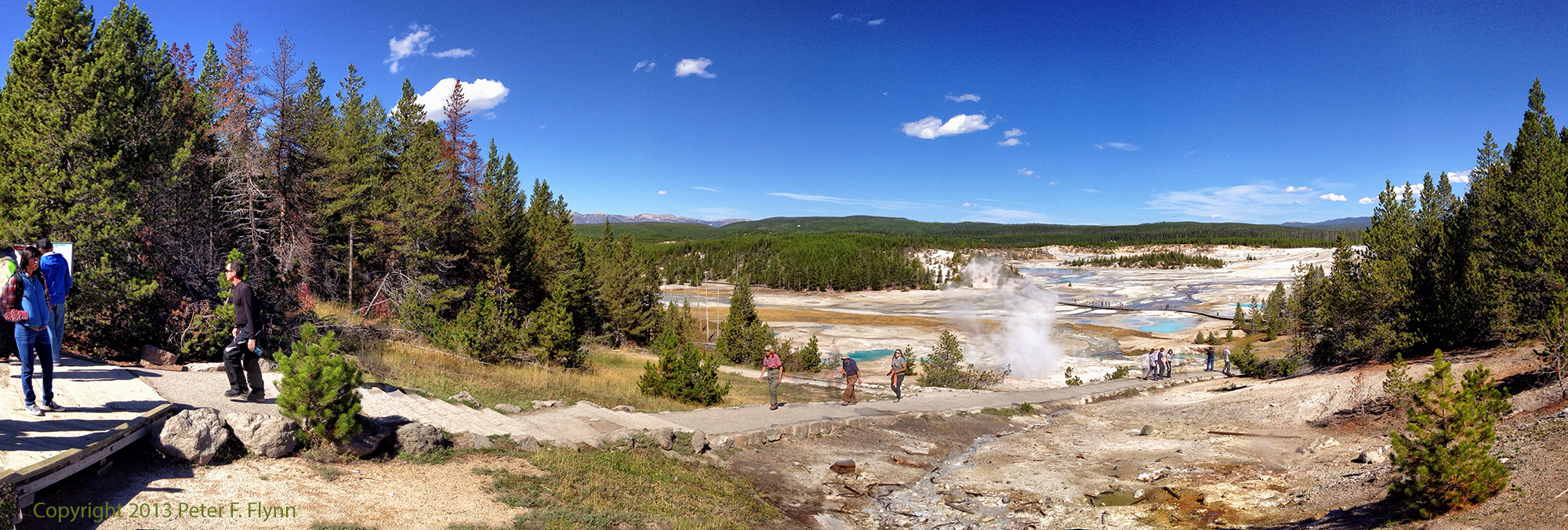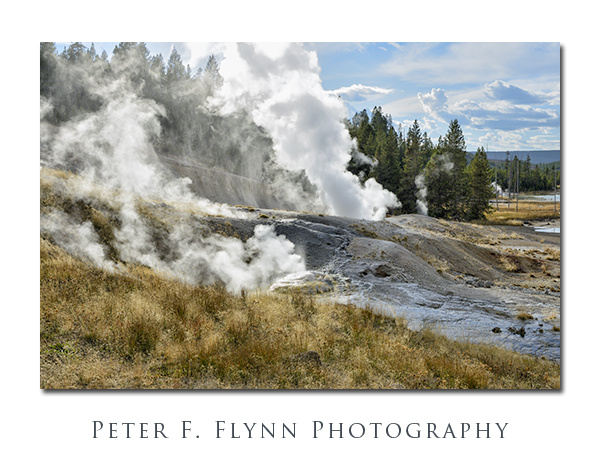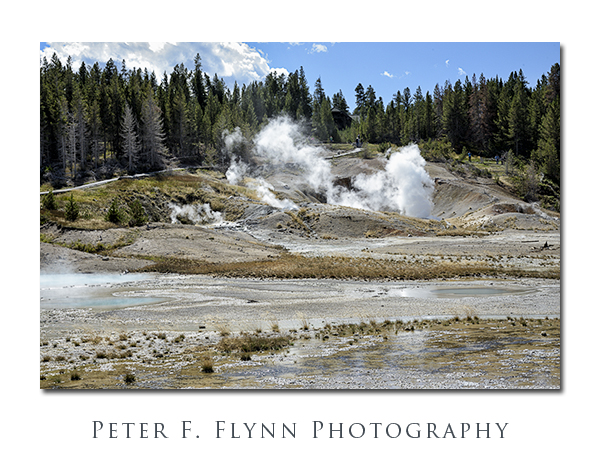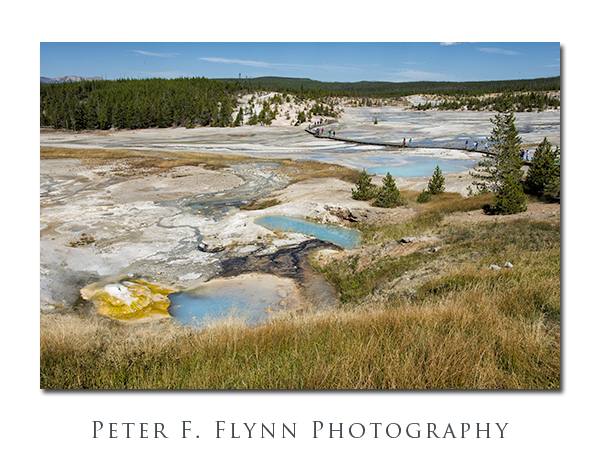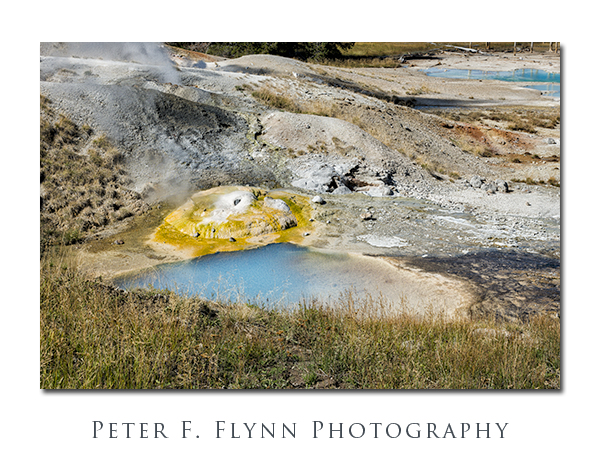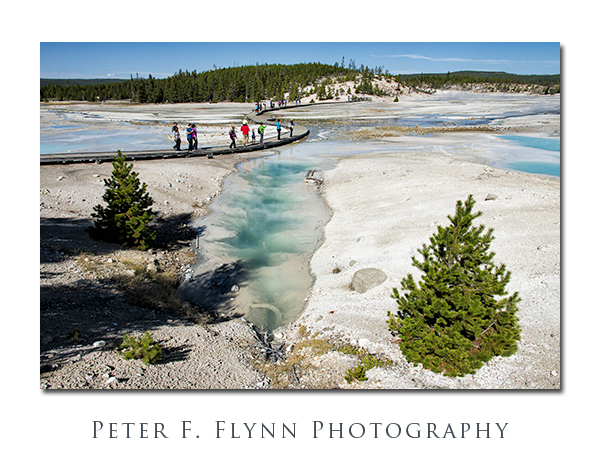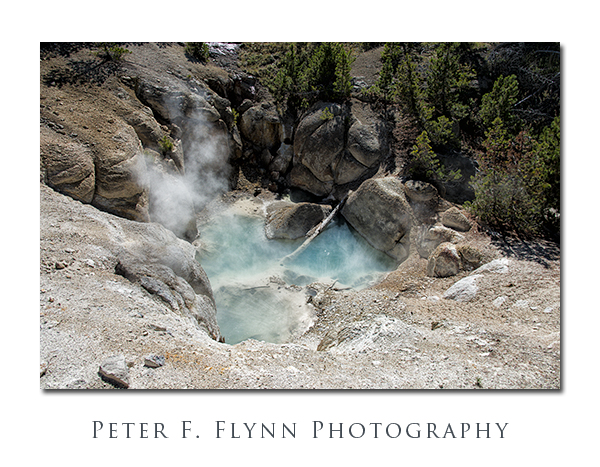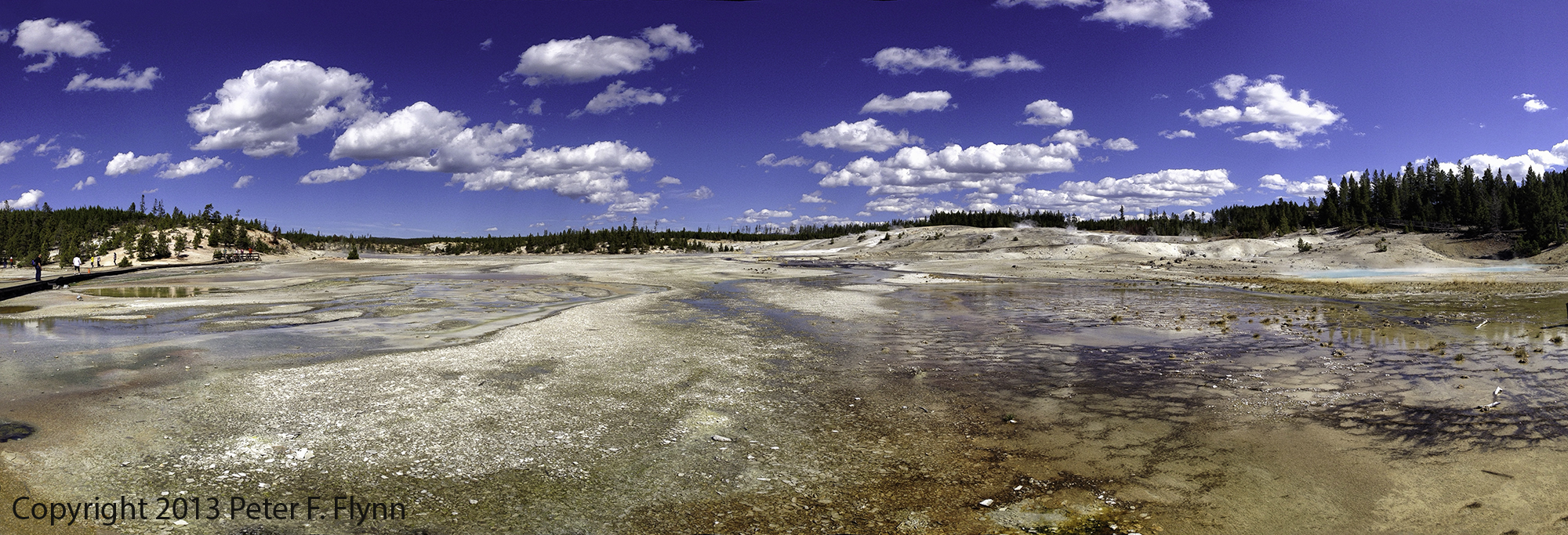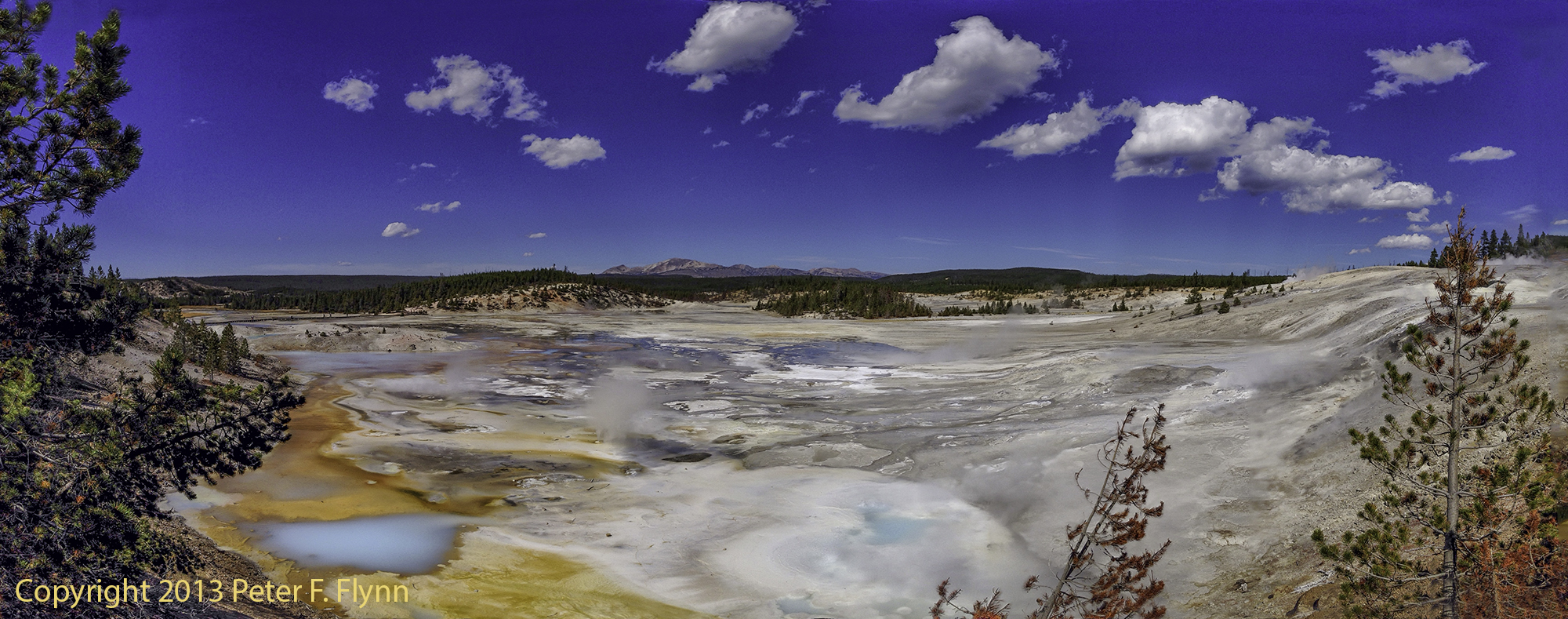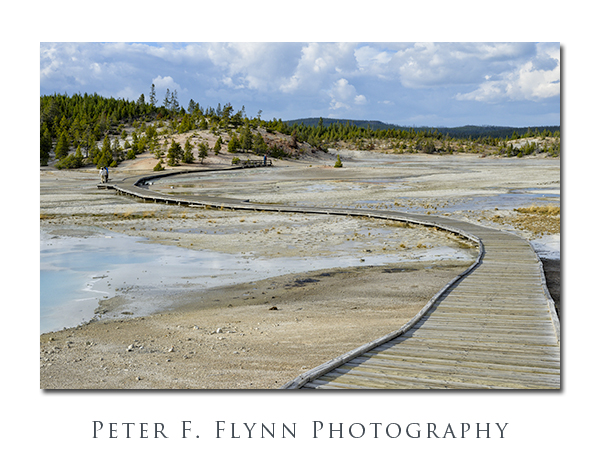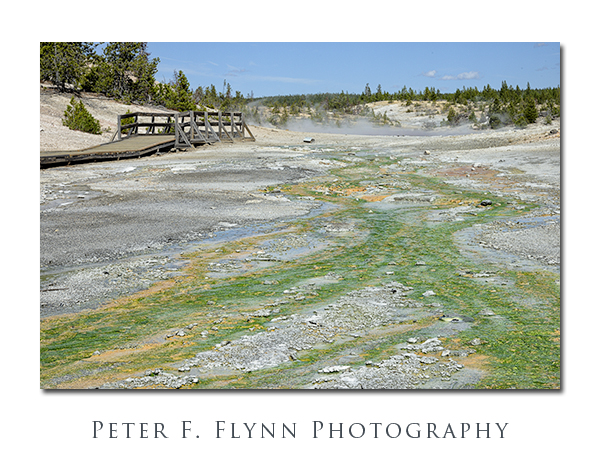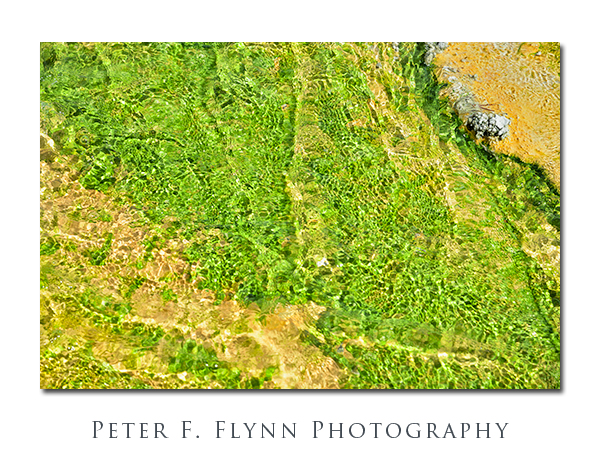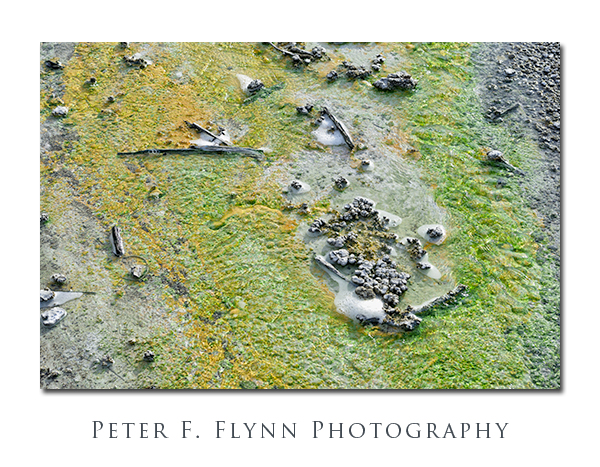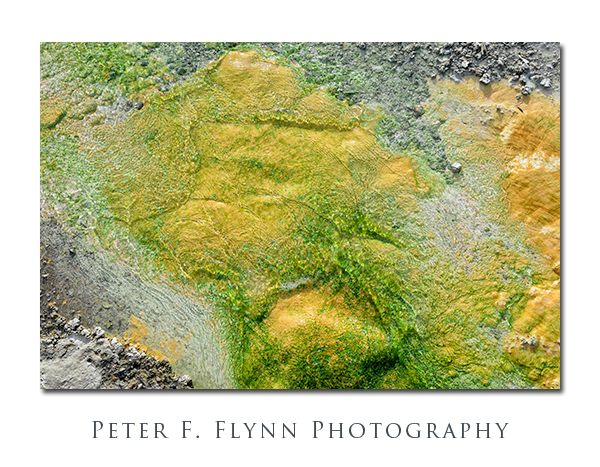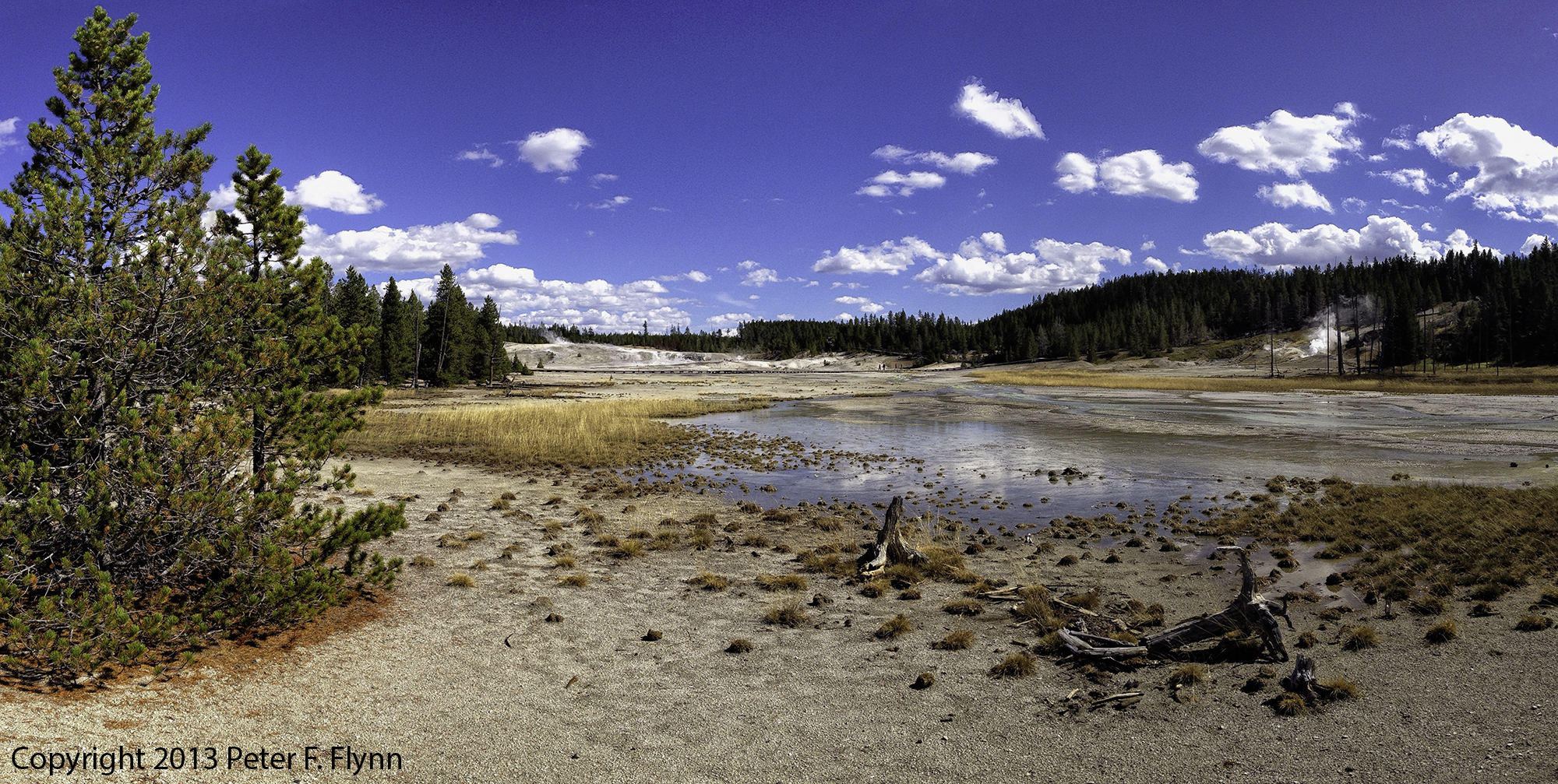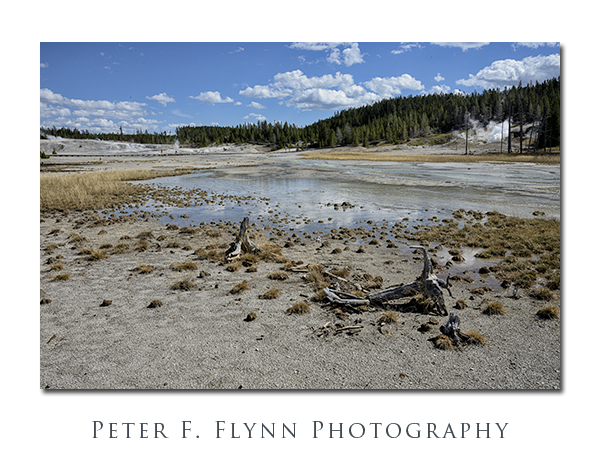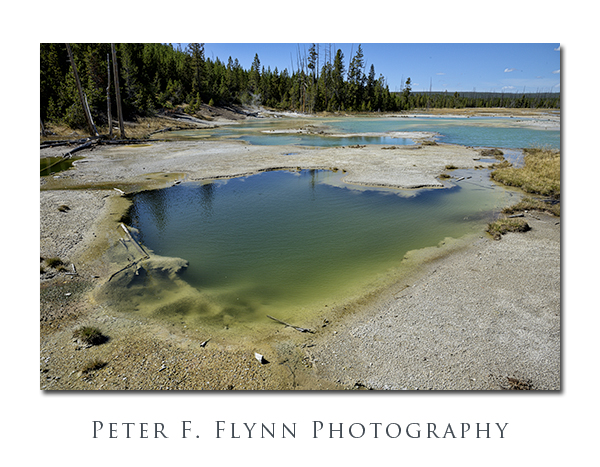In Grand Teton National Park the eyes track the skyline. There is no doubt about this. And feet must answer for what the eyes insist on seeing ever more closely and clearly. Curiously, a goodly number of the day hikes in Grand Teton National Park measure in for the round trip route at just around eight miles – the eye makes extravagant demands…. Most of these routes run flat along their length, and thus make very doable day hikes. There are not less than a dozen of such treks, but our favorites of these cluster along the eastern side of the waterworks, providing the classic Teton water-and-peaks-‘o-granite views. Among these, the path from String Lake to Bearpaw lake may be the very best.
Click on pano thumbnail to view larger image
The path begins at the String Lake Trailhead, shown in the pano above (43.784416N, 110.727310W), and heads north along the lake shore. Alternative starts may be commissioned anywhere along the mile long eastern shore of String Lake. On a sunny day, you will find the picnicking areas along the shore of String Lake packed to the limit with enthusiastic visitors. In summer months, you will need to arrive before 9 am to secure a parking spot – no joke, the String Lake area is super popular.
Leaving the bulk of humanity behind, make your way north. You will most probably be accompanied lakeside by a small flotilla of canoes and kayaks paddling along the length of String Lake.
Click on pano thumbnail to view larger image
Near the north end of String Lake you will pass the portage between String and Leigh Lakes (43.796686N, 110.728348W). This is busy junction, with boats departing/entering String Lake before/after moving north and south along the portage. The portage from String Lake to Leigh Lake is about 225 yards, and gains less than 50 feet – all in all not an unpleasant lift. The southern bay of Leigh Lake is one of the most beautiful locations in the park (43.798275N, 110.727328W). Bordered in thick shore growth, the crystal clear water in the shallow bay opens up to the north with most excellent views of Boulder Island, the bulk of Leigh Lake, and towards the north end of the lake, Mystic Isle.
Click on pano thumbnail to view larger image
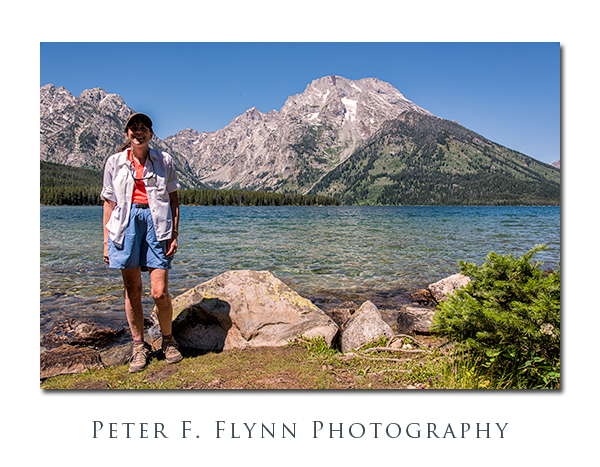 The HP makes an appearance in the image above, shot towards the northwest from the eastern shore of Leigh Lake (43 48.2552N, 110 43.1717W). Note the presence of Mount Moran and Leigh Canyon in the background. The path continues, tracking north along the eastern shore of Leigh Lake. Leigh is a mighty Lake, and would take two days with a fair bit of bushwacking to circumnavigate. Our travels encompass only a quick three mile run up to Bearpaw Lake, which lies just a fraction of a mile north of the top of Leigh Lake. A highlight at the midway point is the the set of three campsites, 12A, 12B, and 12C. The sites are primitive, with very strict occupancy regulations, but offer some of the best lake shore camping anywhere. The pano below was recorded at site 12C.
The HP makes an appearance in the image above, shot towards the northwest from the eastern shore of Leigh Lake (43 48.2552N, 110 43.1717W). Note the presence of Mount Moran and Leigh Canyon in the background. The path continues, tracking north along the eastern shore of Leigh Lake. Leigh is a mighty Lake, and would take two days with a fair bit of bushwacking to circumnavigate. Our travels encompass only a quick three mile run up to Bearpaw Lake, which lies just a fraction of a mile north of the top of Leigh Lake. A highlight at the midway point is the the set of three campsites, 12A, 12B, and 12C. The sites are primitive, with very strict occupancy regulations, but offer some of the best lake shore camping anywhere. The pano below was recorded at site 12C.
Click on pano thumbnail to view larger image
The image above provides a view into Leigh Canyon (43.8150N, 110.7558W). The canyon lies between Mt. Woodring to the south and Mt Moran to the north, and is (mostly) used by climbers seeking to access routes on the northern Teton summits. I am interested in a venture here next summer – since access is pretty much exclusively by (private) boat, I have to imagine that the canyon is relatively wild and uncrowded. The shot below shows one of several bear boxes and hanging rigs that lie near the back of the Camp 12 sites. Given the relative remoteness of the location, I would guess that bears could be frequent visitors to the camp.
Bearpaw Lake (shown below) is a small lake that is isolated from the Jenny-String-Leigh Lake system. It lies nestled (together with Trapper Lake) in a lovely basin in the relatively untraveled region of the park. Although it is highly unlike that you would find your self completely alone here, solitude seekers will be encouraged by a very low head count. There is one large campsite available on high ground between the bulk of Bearpaw Lake and a minor, heavily silted, arm – a bit too right in the middle of things for my taste, but again, the traffic here is low.
Click on pano thumbnail to view larger image
A small stream exists the northern tip of Bearpaw Lake (43.8317N, 110.7280W), and leads north into a heavily silted corner of the lake.
Click on pano thumbnail to view larger image
Images in this entry were recorded on July 26, 2014, using the Nikon D810 with the AF-S NIKKOR 24-120mm f/4G ED VR. This combination represents the state of the art in outdoor photographic gear. I’ve used it all, and I will take this simple setup above anything other one-camera + one lens setup. Panoramic images were recorded using the Apple iPhone 5s with the Autostitch app.
Image
Copyright 2014 Peter F. Flynn. No usage permitted without prior written consent. All rights reserved.




